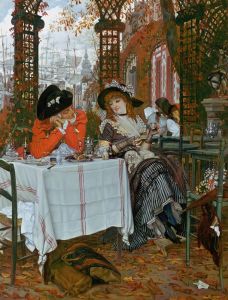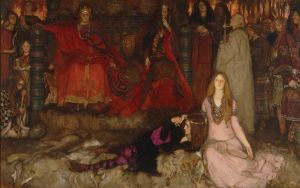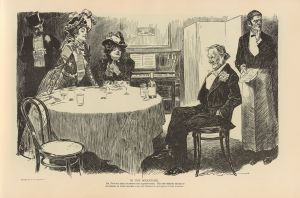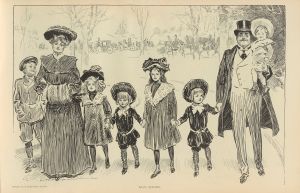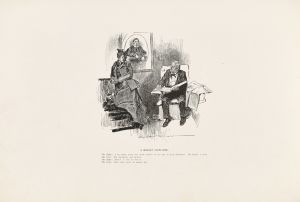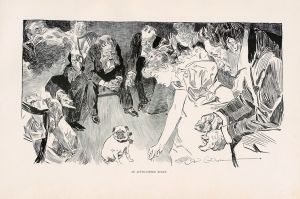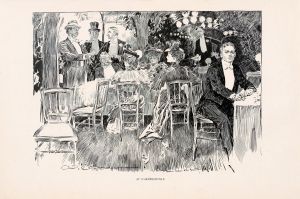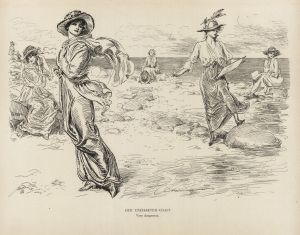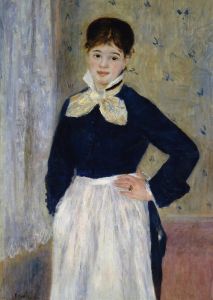
After Dinner
A hand-painted replica of Charles Dana Gibson’s masterpiece After Dinner, meticulously crafted by professional artists to capture the true essence of the original. Each piece is created with museum-quality canvas and rare mineral pigments, carefully painted by experienced artists with delicate brushstrokes and rich, layered colors to perfectly recreate the texture of the original artwork. Unlike machine-printed reproductions, this hand-painted version brings the painting to life, infused with the artist’s emotions and skill in every stroke. Whether for personal collection or home decoration, it instantly elevates the artistic atmosphere of any space.
"After Dinner" is an illustration created by the American artist Charles Dana Gibson, who is best known for his creation of the "Gibson Girl," an iconic representation of the American woman at the turn of the 20th century. Gibson's work, including "After Dinner," played a significant role in shaping the visual culture of the late 19th and early 20th centuries in the United States.
Charles Dana Gibson was born on September 14, 1867, in Roxbury, Massachusetts. He began his artistic career at a young age and studied at the Art Students League in New York City. Gibson's talent for illustration quickly gained recognition, and he became a prominent figure in the world of magazine illustration. His work was featured in publications such as "Life," "Harper's Weekly," and "Collier's Weekly."
"After Dinner" is one of Gibson's many illustrations that capture the social dynamics and cultural norms of his time. The illustration depicts a scene typical of the upper-class social gatherings of the late 19th and early 20th centuries. In the image, a group of well-dressed men and women are seen engaging in conversation and leisure activities after a formal dinner. The men are often portrayed smoking cigars and engaging in animated discussions, while the women are depicted in elegant gowns, embodying the grace and poise of the Gibson Girl ideal.
Gibson's illustrations are characterized by their detailed line work and keen observation of social interactions. "After Dinner" is no exception, showcasing his ability to capture the subtleties of body language and facial expressions. The composition of the illustration often emphasizes the contrast between the relaxed postures of the men and the composed elegance of the women, highlighting the gender roles and expectations of the era.
The Gibson Girl, a recurring figure in Gibson's work, is often seen as a representation of the idealized American woman. She is independent, confident, and fashionable, yet still adheres to the societal norms of femininity. In "After Dinner," the women present may embody aspects of the Gibson Girl, reflecting the changing attitudes towards women's roles in society during the early 20th century.
Gibson's work, including "After Dinner," had a lasting impact on American culture and the field of illustration. His depictions of social scenes and the Gibson Girl influenced fashion, advertising, and the portrayal of women in media. The popularity of his illustrations contributed to the rise of the illustrated magazine and set a standard for commercial art in the United States.
Charles Dana Gibson continued to create illustrations throughout his career, and his work remains an important part of American art history. He passed away on December 23, 1944, leaving behind a legacy of influential and iconic images that continue to be studied and appreciated today. "After Dinner" stands as a testament to his skill as an illustrator and his ability to capture the essence of his time.





